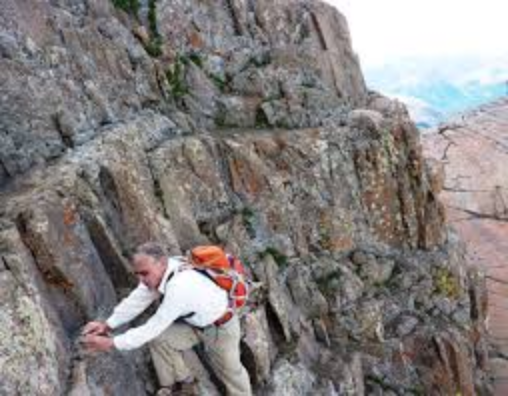
Why is Mountain Climbing So Difficult?
Mountain climbing, at its core, is a dance with danger and a test of human resilience. While the allure of towering peaks and breathtaking vistas is undeniable, the path to the summit is fraught with challenges. It's not just a physical endeavor; it's a mental battle against your own limitations and the unforgiving forces of nature. So, why is mountain climbing so difficult? Let's delve into the specifics.
Objective Hazards: The Mountain's Arsenal
Mountaineers face a barrage of objective hazards - dangers inherent to the mountain environment itself. These are ever-present threats that demand respect and careful mitigation.
1. Loose or Falling Rocks: An Ever-Present Threat
Mountains are dynamic environments in a constant state of erosion. This makes loose or falling rocks a constant threat, especially on steeper terrain. Even a small rock, dislodged from above, can have devastating consequences.
- Causes: Natural weathering, temperature fluctuations, other climbers or animals dislodging rocks.
- Mitigation: Wearing a helmet, climbing in cooler parts of the day when rocks are less likely to fall, being aware of the terrain and potential rockfall zones, maintaining safe distances from other climbers.
2. Falling Ice: Unpredictable and Deadly
Ice falls, whether from seracs (hanging glaciers), ice cliffs, or even smaller formations, are a serious hazard. These events are often unpredictable and can occur without warning.
- Causes: Temperature changes, wind, natural ice movement.
- Mitigation: Avoiding areas prone to icefall, especially during warmer temperatures, climbing early in the morning when temperatures are colder and ice is more stable.
3. Snow Avalanches: The White Fury
Avalanches are a powerful force of nature. They occur when a slab of snow releases its grip on the mountainside, thundering down with immense force, often triggered by:
- Causes: New snowfall, wind loading, warmer temperatures, human activity.
- Mitigation: Checking avalanche forecasts, carrying avalanche safety gear (transceiver, shovel, probe), learning avalanche awareness and rescue techniques, avoiding avalanche-prone slopes.
4. Falls: The Climber's Greatest Fear
A fall while climbing can be disastrous, leading to severe injury or even death. This danger is exacerbated by the altitude, challenging terrain, and potential for long falls.
- Causes: Loss of balance, equipment failure, exhaustion, unexpected changes in terrain.
- Mitigation: Proper climbing techniques, meticulous equipment checks, adequate physical and mental preparation, roping up with experienced partners.
5. Crevasses: Hidden Dangers on Glaciers
Crevasses are deep fissures that form in glaciers. Hidden beneath layers of snow, they pose a significant risk, especially if a climber falls into one.
- Causes: The movement and stresses within a glacier.
- Mitigation: Roping up on glaciers, using proper glacier travel techniques, probing suspect areas with an ice axe.
Altitude and Weather: Unforgiving Elements
Beyond the physical hazards, altitude and weather present their own unique set of challenges.
1. Altitude Sickness: The Body's Struggle for Oxygen
As you ascend to higher altitudes, the air pressure decreases, leading to less available oxygen. This can lead to altitude sickness, which can range from mild symptoms like headaches to life-threatening conditions like HAPE (High Altitude Pulmonary Edema) and HACE (High Altitude Cerebral Edema).
- Causes: Reduced oxygen availability at higher altitudes.
- Mitigation: Gradual acclimatization, proper hydration, medication (Diamox), descending immediately if symptoms develop.
2. Extreme Weather: A Constant Threat
Mountains are notorious for their fickle and extreme weather patterns. Temperatures can fluctuate wildly, storms can blow in with little warning, and visibility can deteriorate rapidly.
- Dangers: Hypothermia, heat exhaustion, storms, lightning, whiteouts.
- Mitigation: Checking weather forecasts, carrying appropriate clothing layers, being prepared to turn back if conditions deteriorate.
Why Climb? Facing the Challenges Head-On
Given these inherent dangers, why do people choose to climb mountains? The answer is as varied as the individuals themselves. Some are drawn to the physical and mental challenge, the thrill of pushing their limits. Others seek the solitude and connection with nature. Whatever the reason, climbing offers a unique perspective on life, a chance to experience the world from a different vantage point. It teaches valuable lessons about perseverance, risk management, and the power of the human spirit.
Q&A
1. What is the most dangerous aspect of mountain climbing?
While all aspects carry risks, falls are the most common cause of serious accidents and fatalities.
2. How can I prepare for the challenges of altitude?
Gradual acclimatization is key. Ascend slowly, allowing your body to adapt to lower oxygen levels. Proper hydration and, in some cases, medication can also help.
3. Is mountain climbing only for experienced adventurers?
Not at all! There are climbs suitable for all levels of experience. Starting with smaller peaks, taking guided trips, and progressively building skills and experience is a safe and rewarding way to get involved in the sport.